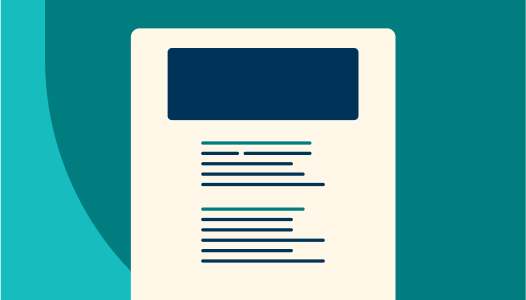Optimizing Asset Maintenance Costs With A CMMS System
An asset’s lifecycle typically starts with defining requirements; planning and creating the asset; maintaining and operating the asset, including condition and performance monitoring; and ends with its renewal or disposal.
Did you know that a long-life infrastructure asset typically spends around 80-90% of its life in the “maintain and operate” phase? While many people think an asset’s construction is where the bulk of the cost occurs, you can accumulate up to 80% of the total life cycle cost by simply keeping the asset running. That’s a considerable cost, and one asset managers should pay particular attention to.
Capturing the cost of maintaining an asset can significantly help support strategic decision-making. For example, you may want to periodically analyse the top ten most expensive assets to maintain. Or you might want to look at how your team’s labour charge-out rates compare to your actual cost-of-labour budget to help make decisions around resourcing.
There are different approaches for capturing maintenance costs, some of which depend on the system you use and your organization’s appetite and maturity around maintenance activities.
Approaches to capturing asset maintenance costs in a CMMS
No data gathered – Firstly, we know some organisations don’t capture maintenance costs at all. While less data entry may seem like a time saver, without that data, there’s no way of knowing whether you’re making the right maintenance or budget decisions. This approach may be okay if your maintenance is outsourced and the contractor is capturing the information; however, it’s wise to capture the total cost of a job on work orders so you can track spending to some extent.
Activity-based costing – This is about analysing the key activities undertaken for an asset and then defining an all-inclusive unit rate for those activities. It’s a simple approach and will give you a ballpark figure for the work against an asset, allowing you to do some analysis. However, it doesn’t capture specific nuances relating to those maintenance activities. If, for example, we used an all-inclusive unit rate for pothole repairs, it wouldn’t capture whether it was a small or large pothole and how much material or labour was required for each pothole, meaning you still need to track spend in other ways.
Unit-rate costed items – This is having all your line items, such as labour and materials, configured and captured against a work order. The method does allow for some detailed analysis; however, you still need to make sure your unit rates are relevant, especially if prices for parts or external services tend to fluctuate, particularly with current inflation. Overall, it offers a reasonably accurate view of your costs and is easy to achieve and implement.
Fully-integrated maintenance management system – The most rigorous and accurate approach is deploying a fully-integrated computerized maintenance management system (CMMS). This is where all line items are configured and captured against a work order, with actual costs continually updated via integrations with your procurement, inventory and HR systems, allowing for detailed analysis. This will give the most accurate costing of work; however, this approach does require a larger overhead to configure and implement.
What approach is correct for you?
If your organisation is just starting out in their journey to improve their maintenance capabilities, we recommend start by capturing activity-based unit rates and analysing them. Then, as your business matures, you can look at ways to improve these which may include bringing in specialists to further refine costing rates. Brightlys offers flexible, customisable work order costing solutions for smarter asset maintenance decisions and will support each of these approaches mentioned above.
Benefits of using a modern CMMS
There are several benefits of using CMMS over other approaches. For instance, with a CMMS, you can:
Track material usage – A major benefit of CMMS is being able to track what materials are being used. This allows you to manage inventory levels more effectively and, more importantly, influence your purchase pricing.
Monitor your workforce – Knowing how many hours your staff work allows better resource control and allocation. You can also monitor those costs against assets and their location to better plan where your work teams are established. You can even use that data to plan where you might have depots or crews located.
Mobile workforce management – Mobile devices and other technological tools enable seamless communication between field workers and the main office by giving access to real-time information, improving response times, and reducing duplication of effort and data. The correct mobile tool will allow supervisors to dispatch work to the appropriate technician or crew based on an asset or defect location.
Control your costs – Recording actual spending helps reduce overspend. There are some jobs you may need to push back on or lower service levels to achieve your budget, or you may need to increase service levels if you're underspending in certain areas. With accurate data, a CMMS gives you a lever that you can pull in terms of your cost and the levels of service.
Identify underperforming assets – Tracking the cost of work and failure history will allow you to identify which assets are underperforming or problematic. This helps you decide whether you need to change the way you're maintaining those assets or replace them sooner.
Benchmark your maintenance – Knowing the cost breakdown of your work orders allows you to benchmark your in-house maintenance against external workforce providers and see whether you're efficient and competitive. Given the current government trend to outsource maintenance, it’s an excellent way to justify keeping your maintenance in-house.
Create management dashboards – With a CMMS, you can build dashboard to display and summarise all your parts, material, services, and labour costs. You can also view each work order and get a broken-down summary of parts, materials, and labour, perform high-level analysis, or take a detailed look at individual parts. These can help you to easily identify trends and issues before they may arise.
Continuously improve – By analysing your data, it will allow you to keep fine-tuning your approach to maintenance and improve what you're doing.
Making better decisions with data – What should you be doing right now
Given the dynamic macro environment and high inflation, it is wise to review material rates more frequently than in the past. Not only has the cost of importing parts gone up but wait times have gone up as well. This means you need to look more closely at your material cost data and ensure your costs are accurate and your desired stock levels are still suitable given these changes in wait times, particularly if your procurement and maintenance systems are not integrated.




